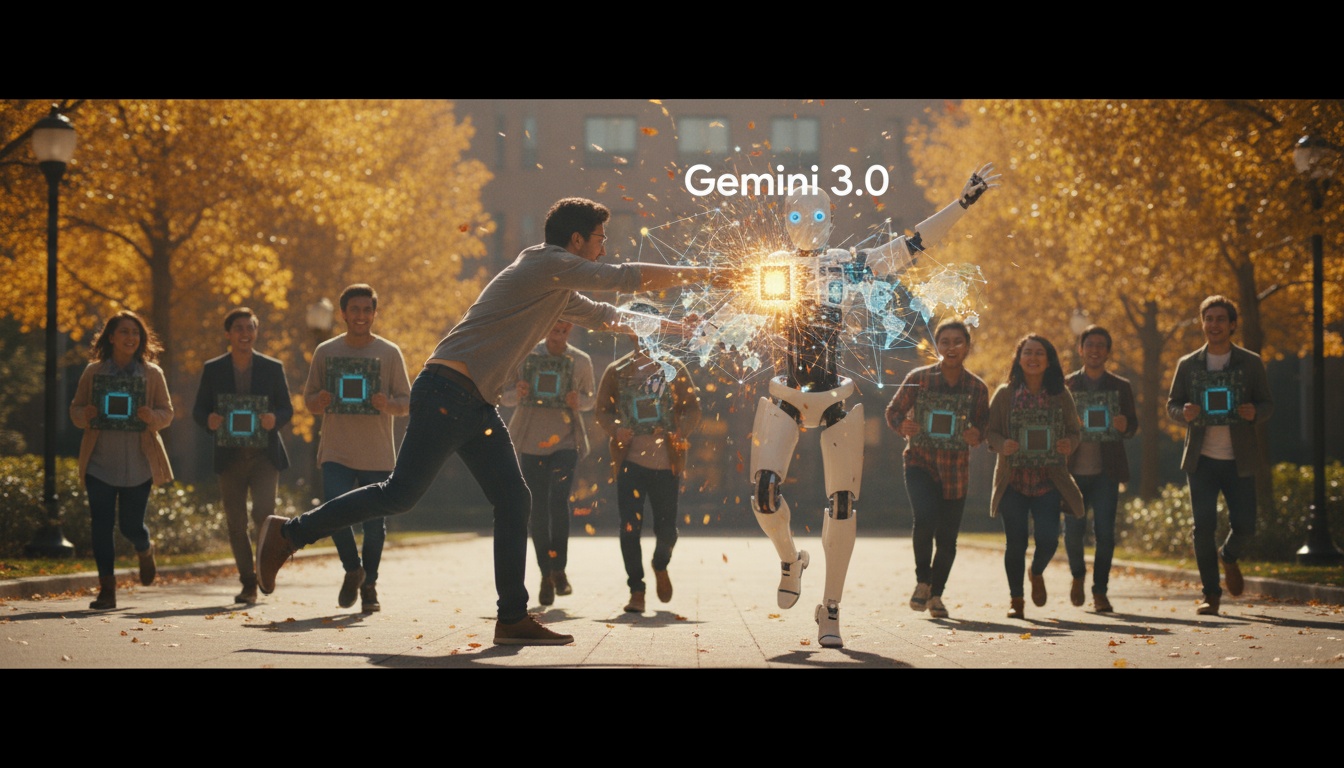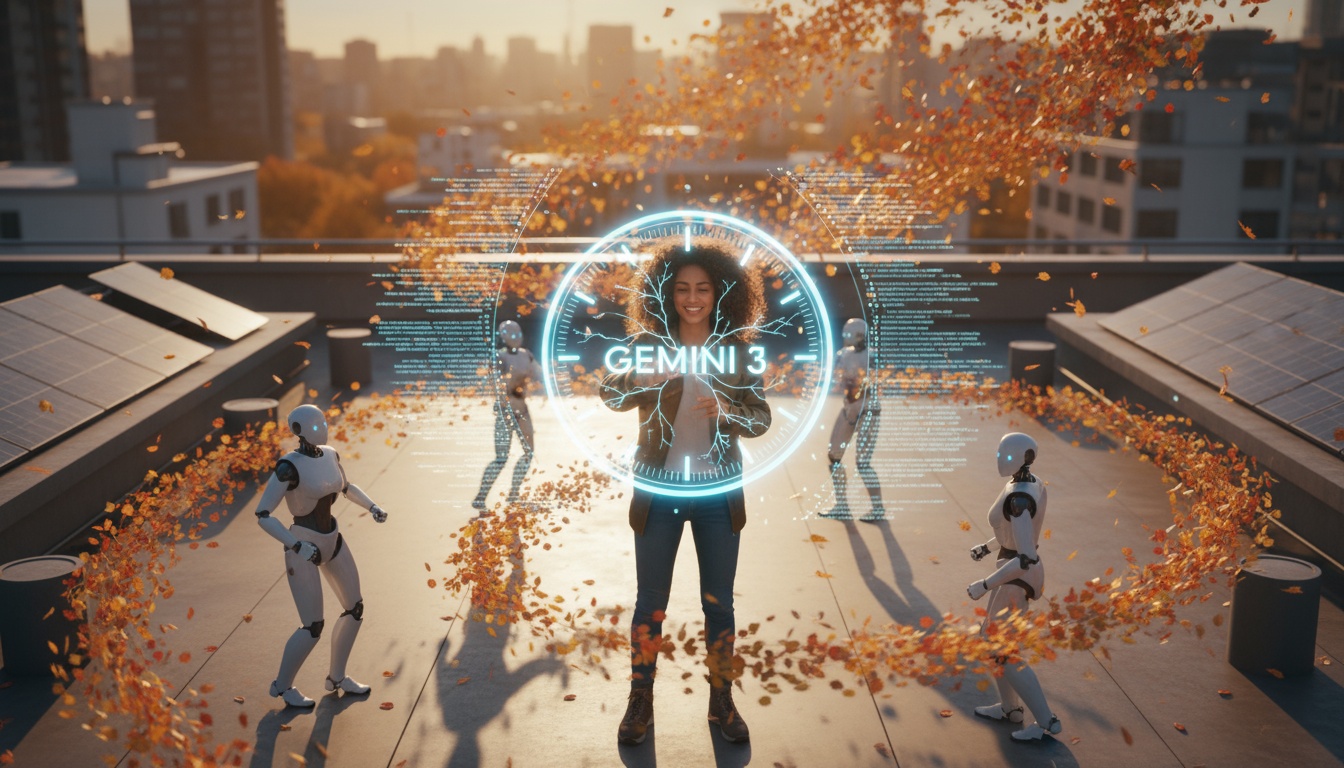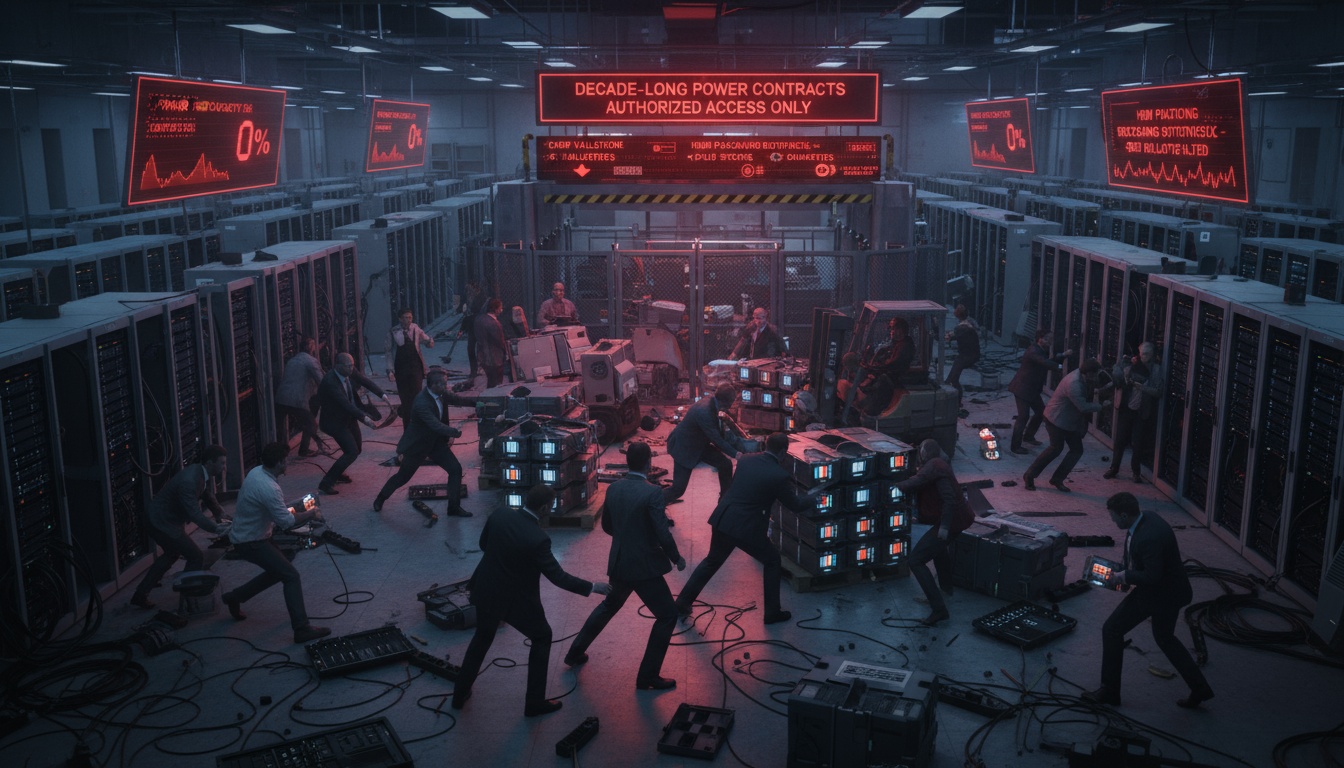● AI Warfare US-China Clash, Semiconductor Showdown, Future Dominance
The AI Power Struggle between the US and China and Korea’s Future – Global Economic Outlook, AI Trends, and Key Issues in the Semiconductor Industry
The AI Competition Landscape between the US and China
The fact that the US and China are fiercely competing for dominance in the AI market is having a significant impact on the global economic outlook.
The US emphasizes its AI superiority and is pursuing a strategy to connect its global allies through investments in superintelligence (AI AGI), data centers, and semiconductor infrastructure.
On the other hand, China is experiencing rapid growth in various fields such as robotics, unmanned manufacturing, and on-device AI, focusing on domestic market-based AI localization and physical AI.
This US-China competition is driving changes in AI trends, which are core engines of the digital economy and the Fourth Industrial Revolution.
Amid the US’s arrogance and China’s aggressive strategy, the global economy is entering a new era of technological dominance.
The Rise of AI Semiconductors and Physical AI
The key to AI development is concentrated in the semiconductor industry.
Currently, AI technology is rapidly evolving from recognition AI to generative AI and is expanding into the next-generation paradigm of physical AI.
On-device AI semiconductors, which can perform real-time operations in wearable devices, autonomous driving, and robotics without relying on data centers, are drawing attention.
Semiconductors are no longer just simple components but are now national strategic assets that significantly impact the global economic outlook.
In the US-China competition, the US is focusing on high-performance GPUs and large-scale infrastructure, while China aims to secure new market competitiveness through the development of low-power, miniaturized AI chips.
Korea’s Strategy and Digital Economic Transition
Although Korea is a powerhouse in memory semiconductors, it currently holds a minimal market share in system semiconductors and AI semiconductors.
As the global US-China competition intensifies, Korea needs a strategic response to emerge as one of the top three countries in AI.
As emphasized by former Minister of SMEs and Startups Park Young-sun and representatives of on-device AI semiconductor companies, investment in AI semiconductors and the development of on-device technology are core elements of national competitiveness, beyond mere technological innovation.
Korean companies need to actively pursue strategies for differentiated technological competitiveness, customized products, and rapid market entry to take the lead in the digital economic transition.
Additionally, by leveraging government support policies and cooperation between industry and academia, Korea must secure future growth engines aligned with the global economic outlook and AI trends.
Key Undisclosed Points to Note
One notable aspect of the US-China AI war is that both countries are building the future of national strategy through AI, going beyond simple technological competition.
The US, under the pride of being the home country of AI, is focusing on developing advanced superintelligence technologies and reshoring manufacturing industries.
China is pursuing an aggressive strategy to occupy overseas emerging markets by localizing AI beyond its domestic market.
As a result, factors such as government policies, industrial infrastructure, and international alliances are all acting in a complex manner within the global economic outlook and AI trends.
This perspective provides deep insights that are not sufficiently addressed in other YouTube channels or news outlets.
Korea needs to seize this US-China competitive landscape as an opportunity and seek differentiated strategies and investments to establish itself as one of the top three AI powers on the global stage.
< Summary >As the US and China engage in fierce competition for AI dominance, the rise of the semiconductor industry and physical AI serve as core drivers of the digital economy.
Korea needs to focus on the development of AI semiconductors and on-device technology to actively respond to global economic outlooks and AI trends, moving beyond its status as a memory semiconductor powerhouse.
Amid the delicate balance between US technological superiority and China’s domestic strategy, the development of AI technology as a national strategic asset will determine future competitiveness.
[Related Articles…]Future and Investment Strategies of the Semiconductor IndustryKey Points in AI Innovation and Digital Transformation
*Source: [ 티타임즈TV ]
– 박영선 전 장관이 분석하는 미중 AI 패권 전략
● Revolutionary AI Robots Transform Global Education and Safety
From China’s Human-Like AI Robot H2 to South Africa’s AI Education Robot Iris: Reading the Future of Innovative Technology and Economic Outlook
The Emergence of Human-Like AI Robot H2 in China
Unitree’s H2 is a culmination of the latest robotic technology, boasting unprecedented human-like expressions and smooth movements.
The robot stands 180cm tall and weighs 70kg, featuring 31 joints and demonstrating 19% more agility than its predecessor.
Moving away from the appearance of a mere metal block, it mimics human biomechanics with soft movements and expressions reminiscent of real human emotions.
This technological advancement is viewed as a significant milestone not only for the global economy but also for the innovation in the Fourth Industrial Revolution.
Particularly, as China leads AI trends and economic outlooks on the world stage, it is expected to play a crucial role in strengthening market competitiveness in the future.
South Africa’s Innovation with the Multilingual AI Education Robot Iris
In South Africa, the AI tutor ‘Iris’ developed by BSG Technologies has shown remarkable achievements.
This robot can communicate in 11 official languages and is equipped to provide educational content to students of various ages.
It is gaining attention as an important solution for bridging educational gaps in remote areas and improving the quality of education, reflecting a case where economic outlook and AI trends of the Fourth Industrial Revolution intersect.
Such technology is evolving alongside the global digital transformation of education systems, highlighting the positive impact of technological advancement on society as a whole.
The Emergence of Practical Robotic Dogs and AI Patrol Robots in Dubai and China
At the GITEX Global Tech Fair in Dubai, DEEP Robotics showcased AI robotic dogs that have garnered significant interest due to their obstacle overcoming, environmental awareness, and autonomous decision-making abilities.
In one of China’s police stations, AI patrol robotic dogs are being trialed to manage issues such as illegal parking and safety concerns, taking on various roles in crime prevention.
These robotic dogs are recognized as efficient operational solutions that replace dangerous human tasks and gather real-time information, while also expanding the application range of innovative technology from an economic outlook perspective.
Furthermore, these groundbreaking technologies reflect the positive impacts they may have on existing industrial structures in the global economy.
The Touching Story of a Small AI Companion
Meanwhile, a video from China shows a 6-year-old girl mourning the loss of her broken AI companion robot, illustrating the emotional connection between robots and humans.
This small robot plays educational and emotional support roles, taking on significance beyond that of a mere machine.
The emotions demonstrated by the young girl exemplify a future where AI becomes deeply integrated into human daily life, influencing culture and society at large.
This case opens a discussion on the societal acceptance and ethical issues concerning innovative technologies related to economic outlook.
Recent news on robotic technology advancements reflects current industry trends and is being re-evaluated as major issues related to the global economy, economic outlook, AI trends, the Fourth Industrial Revolution, and innovative technologies. The various robot demonstrations and practical application cases underway in different countries provide vital insights for overcoming the uncertainties of future industries and establishing new growth engines. In particular, the convergence of hardware and software, along with innovative approaches in education and safety, is expected to have a positive impact across the entire industry in the future.
< Summary >
China’s Unitree H2 sets a new standard for AI technology with its human-like appearance and movements.
South Africa’s Iris is an AI education robot that contributes to bridging the educational gap by speaking 11 languages.
In Dubai and China, practical robotic dogs and AI patrol robots are leading innovations in safety and emergency response.
The touching story of a small AI companion highlights the emotional connection between robots and humans, forecasting the future of the Fourth Industrial Revolution.
[Related articles…]
The Future of AI Robot Innovation | The Global Impact of AI Education Robots
*Source: [ AI Revolution ]
– China Just Shocked The World Again With Its Most Human AI Robot Ever (Unitree H2)
● Gemini 3.0 Unleashes AI Revolution, Transforms Global Economy
Google Gemini 3.0: Analysis of Key Trends That Will Change AI Innovation and Global Economic Transformation
1. Innovative Features of Gemini 3.0 and Its Impact on the AI Market
Google’s announcement of Gemini 3.0 boasts significantly enhanced performance compared to the previous Gemini 2.5.
Recently, Gemini 3.0 Pro has attracted attention by scoring high in various evaluation metrics such as LM arena, hieroglyph benchmark, and Kingbench, competing with GPT5i.
In particular, this model significantly improves reasoning, cross-sectional thinking (the ability to understand non-linear correlations), and abstract problem-solving capabilities, leading to technological innovation in the AI field.
These changes are expected to have a major impact on global economic forecasts, AI trends, technological innovation, the fourth industrial revolution, and investment in artificial intelligence, aligning with key economic keywords and shaping global competitive dynamics.
2. Strengthened Coding Skills and Multimodal AI Performance
Gemini 3.0 Pro demonstrates powerful coding capabilities, capable of implementing thousands of lines of code all at once, beyond simple text processing.
In fact, Gemini 3.0’s coding abilities have stood out in various tests, such as creating complex website designs or game programs.
Additionally, advancements in multimodal functions like image recognition and visual reading open up new possibilities for AI to solve real-world problems.
These features are likely to have a positive impact on the fourth industrial revolution and investment in artificial intelligence, with a substantial ripple effect across the entire technology market.
3. Economic Perspective on AI Trends and Global Future Outlook
The innovations of Gemini 3.0 have significant implications for the global economy beyond mere technological advancement.
The advancement of technology and AI trends will be key drivers in expanding artificial intelligence investments, improving fourth industrial infrastructure, and fostering new industry ecosystems across nations.
Notably, as the global economy demands digital transformation and smart technologies, advanced AI models like Gemini 3.0 are expected to contribute to enhancing corporate competitiveness and creating new industries.
4. Beta Schedule and Expected Effects: Analyzing Launch Timing and Economic Variables
According to predictions by Poly Market, Gemini 3.0 has a 62% likelihood of being released by the end of October.
However, considering Google’s historical release patterns, it is important to keep in mind that there may be delays.
Depending on the launch schedule, new products featuring code-based capabilities and multimodal functions are expected to emerge in the market, intensifying the technological competition with rival companies, especially Anthropic.
These changes will redefine global economic forecasts and the direction of technological innovation.
5. Hidden Key Points in the News: Overcoming the Limitations of Evaluation Metrics and Visual Models
An important aspect often overlooked in the news is that Gemini 3.0 is equipped not only with simple text processing capabilities but also with the ability to solve visual reasoning and spatial complexity.
For instance, in tests recognizing the time on a clock image, existing models have failed, while Gemini 3.0 is gradually improving its accuracy.
Furthermore, significant performance improvements in coding and visual recognition, as demonstrated through benchmark evaluations, are expected to have a major economic ripple effect in actual industry applications.
Summary
Gemini 3.0 has greatly improved in reasoning and creative problem-solving abilities compared to previous models,
and its enhanced coding and multimodal capabilities expand its potential for actual industrial applications.
These technological innovations are expected to develop into a global competitive landscape intertwined with key economic keywords such as global economic outlook, AI trends, the fourth industrial revolution, technological innovation, and investment in artificial intelligence.
Market volatility and benchmark evaluation results related to the launch schedule are expected to have significant implications for future economies and technological markets.
[Related Articles…]Google AI Capsule: Innovation of Gemini 3 | Coding Models, Leading AI Innovations for the Future
*Source: [ TheAIGRID ]
– OpenAI on NOTICE: Google’s Gemini 3 is Coming to Change EVERYTHING (Gemini 3 Details)


